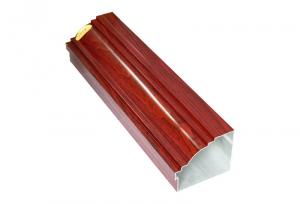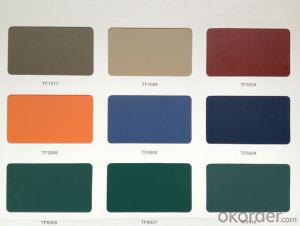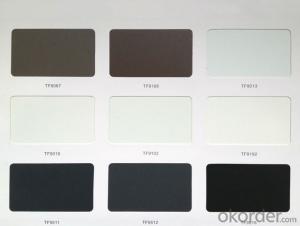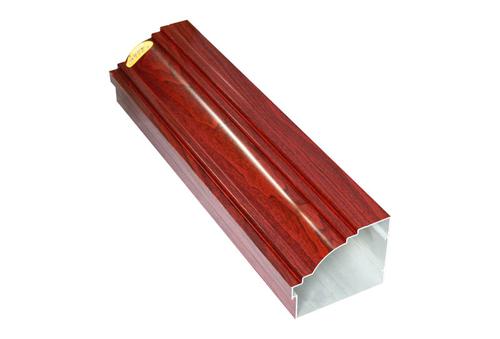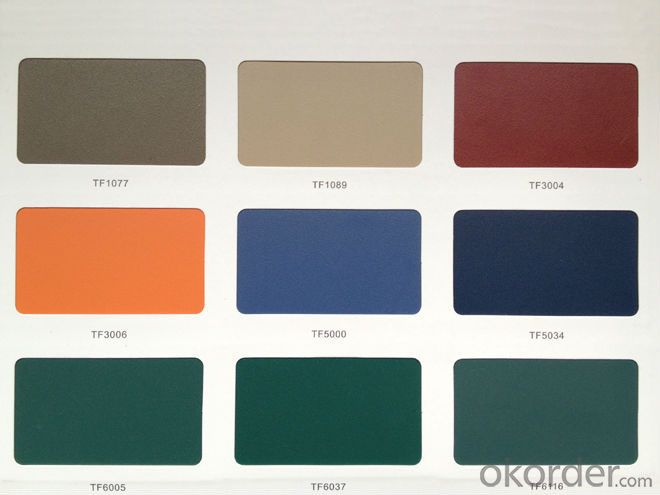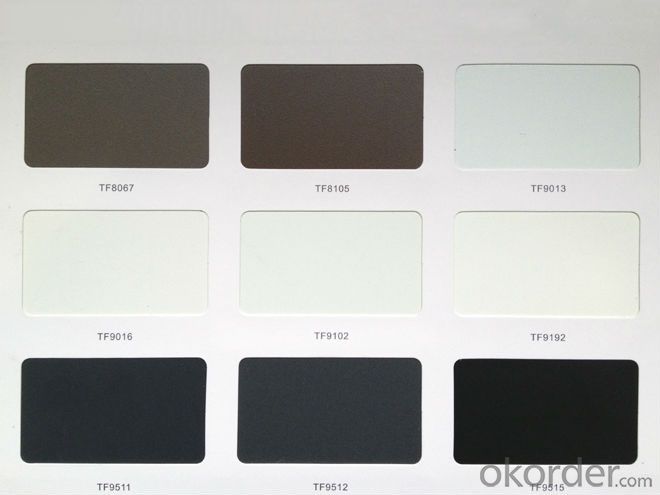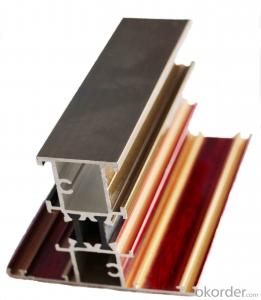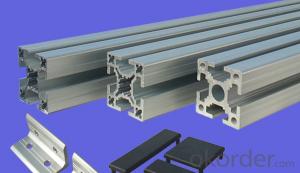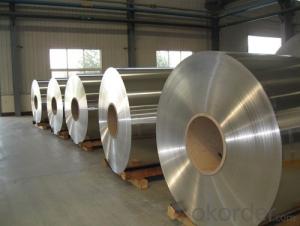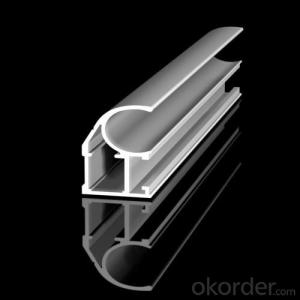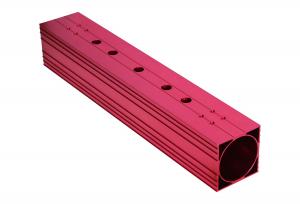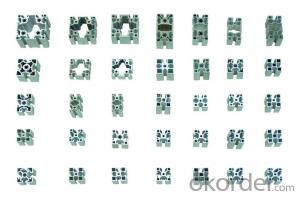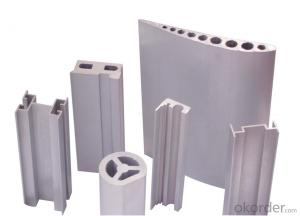Aluminum F Molding Extrusion Powder Coating Profiles
- Loading Port:
- China Main Port
- Payment Terms:
- TT OR LC
- Min Order Qty:
- -
- Supply Capability:
- -
OKorder Service Pledge
OKorder Financial Service
You Might Also Like
POWDER COATING ALUMINUM PROFILE
Industrial aluminium profile
1)Material : 6063 6061 6060 and different aluminium alloy
2)Status:T4 T5 T6 or other special status
3)Surface treatment: mill finish, anodized sliver ,anodized bronze, anodized champagne, anodized black pearl, various power coating color, electrostatic sliver, electrostatic champagne, electrostatic golden, electrostatic titanium , machine polish sliver, machine polish bronze, wooden grain color, and Fluorocarbon spraying.
4)Annual capacity : 120000TON
5)Quality : China Nation Standard GB/T 5237 2008 (advanced class)
6)Use: can be widely using aluminium window, door, curtain wall, hand railing , normal aluminium profile, decorative and industrial aluminium profile
7)Advantage: Famous Brand reasonable&market price, soonest delivery and good after sale- service
8)Type of package:protection foam+heat contracted plastic film. / wooden packing / Metal pallet or depand on clientspecial requirement.
9)Payment term:T/T:30% of total value as deposite should paid by T/T within 3 days when confirmation ,and the remaining sum should be paid by T/T before delivery.L/C: 100% at sight
10)Delivery Day: 15-30days
11)Honor : CHINA FAMOUS TRADEMARK, CHINA TOP BRAND, ISO9001-2000, CHINA SQUARE&ROUND COMMITTEE DNV
- Q: This question asks for a list of various uses of aluminum profiles within the construction industry.
- <p>Aluminum profiles have a wide range of applications in the construction industry due to their strength, durability, and lightweight properties. They are used in window and door frames for their resistance to corrosion and ease of maintenance. They are also employed in curtain walls, which are the outer coverings of buildings, providing both aesthetic appeal and structural integrity. Aluminum profiles are utilized in the construction of scaffolding for their high strength-to-weight ratio, ensuring safety and stability. Additionally, they are used in the manufacturing of modular buildings and prefabricated structures due to their ease of assembly and disassembly. Other applications include roofing systems, flooring structures, and as support beams in various construction projects.</p>
- Q: This question asks about the various types of surface treatments or finishes that can be applied to aluminum profiles.
- <p>Aluminum profiles can be coated with different types of finishes to enhance their appearance, durability, and resistance to corrosion. Some common types of coatings include: 1. Anodizing, which creates a protective oxide layer on the surface. 2. Powder coating, a durable and colorful finish applied through an electrostatic process. 3. Electrophoretic coating, a method that uses electric current to apply a paint-like coating. 4. PVDF coating, a high-performance finish with excellent weather resistance. 5. Thermal spraying, which applies a coating through a high-velocity flame. 6. Vacuum coating, a process that deposits thin layers of material in a vacuum chamber. Each type of coating has specific properties and applications, making them suitable for different environments and uses.</p>
- Q: Can aluminum profiles be used for electrical busbars?
- Indeed, aluminum profiles are capable of serving as electrical busbars. The utilization of aluminum in busbars is widespread as a consequence of its exceptional electrical conductivity, affordability, and lightweight properties. Aluminum profiles present a dependable and effective means for electrical distribution across a range of scenarios, encompassing power distribution systems, switchboards, and control panels. They boast commendable thermal conductivity, aiding in the dissipation of heat produced during periods of intense current flow. Nevertheless, when opting for aluminum profiles for busbar applications, it is crucial to take into account factors such as current carrying capacity, mechanical strength, and electrical insulation requirements.
- Q: This question asks for methods to ensure the reliable and durable installation of aluminum profiles.
- <p>To ensure the reliable and durable installation of aluminum profiles, follow these steps: Use high-quality aluminum materials that meet industry standards for strength and durability. Ensure proper alignment and level during installation to prevent warping or stress on the profiles. Use appropriate fasteners and adhesives recommended for aluminum to ensure a strong bond. Avoid over-tightening fasteners, which can cause deformation. Regularly inspect and maintain the profiles to check for signs of wear or damage, and address any issues promptly. This will help maintain the integrity and longevity of the aluminum profiles.</p>
- Q: What are the industries that require aluminum profiles in industry?
- 10, furniture aluminum profiles are mainly used for furniture decorative boxes, tables and chairs, support components11, solar photovoltaic solar energy profiles include: aluminium frame, solar photovoltaic, solar photovoltaic and other fastener scaffold.12, rail vehicle structure aluminum alloy profile: mainly used for rail vehicle body manufacturing. Aluminum alloy profiles have the characteristics of light weight, good formability, high strength, corrosion resistance and recycling. In recent years, aluminum and aluminum alloys have been used more and more widely in the field of rail vehicles.13, Mount Aluminum Profiles: made of aluminum alloy frame, mounting a variety of exhibitions, decorative paintings.14, medical equipment aluminum profile is mainly used in: stretcher frame, medical equipment, medical bed, etc..
- Q: What are the cost considerations for using aluminum profiles?
- Some cost considerations for using aluminum profiles include the initial cost of purchasing the profiles themselves, any additional costs for custom or specialized profiles, the cost of installation and assembly, maintenance costs, and potential future costs for repairs or replacements. Additionally, the cost of aluminum profiles may vary depending on the quality and thickness of the material used.
- Q: How are aluminum profiles insulated?
- Aluminum profiles are typically insulated using a thermal break system. This involves placing a non-conductive material, such as polyamide or polyurethane, between the inner and outer sections of the aluminum frame. This insulation helps to reduce heat transfer and improve energy efficiency in buildings.
- Q: What are the dimensions of standard aluminum profiles?
- The dimensions of standard aluminum profiles differ based on the specific application and industry standards. However, there are commonly used dimensions across various industries. Typically, the width of standard aluminum profiles can vary from a few millimeters to several hundred millimeters. Additionally, the height or depth of profiles can range from a few millimeters to several inches. Concerning length, standard aluminum profiles are often found in standard lengths of 6 meters or 20 feet. Nevertheless, they can also be customized to specific lengths according to project requirements. Furthermore, the thickness or wall thickness of aluminum profiles can differ based on the intended use and load-bearing capacity. Generally, aluminum profiles have a thickness ranging from 0.5 millimeters to several millimeters. It is essential to note that these dimensions are not fixed and may vary depending on the manufacturer, industry standards, and specific project requirements. Therefore, it is advisable to consult the manufacturer or supplier to determine the precise dimensions of standard aluminum profiles for a particular application.
- Q: Can aluminum profiles be used in the construction of greenhouses?
- Yes, aluminum profiles can be used in the construction of greenhouses. Aluminum is a lightweight and durable material, making it an excellent choice for greenhouse construction. It is resistant to corrosion, which is important in a moist and humid environment like a greenhouse. Aluminum profiles can be easily fabricated and assembled, allowing for flexibility in design and construction. Additionally, aluminum is a sustainable material as it is 100% recyclable, making it environmentally friendly for greenhouse construction. Overall, aluminum profiles are a practical and reliable option for building greenhouses.
- Q: Are aluminum profiles suitable for automotive racks and carriers?
- Yes, aluminum profiles are suitable for automotive racks and carriers. Aluminum is a lightweight and durable material that can withstand the demands of carrying heavy loads while maintaining structural integrity. It also has excellent corrosion resistance properties, making it ideal for outdoor use and exposure to different weather conditions. Additionally, aluminum profiles can be easily customized and designed to meet specific requirements, allowing for versatility in the design and construction of automotive racks and carriers.
Send your message to us
Aluminum F Molding Extrusion Powder Coating Profiles
- Loading Port:
- China Main Port
- Payment Terms:
- TT OR LC
- Min Order Qty:
- -
- Supply Capability:
- -
OKorder Service Pledge
OKorder Financial Service
Similar products
Hot products
Hot Searches
Related keywords
